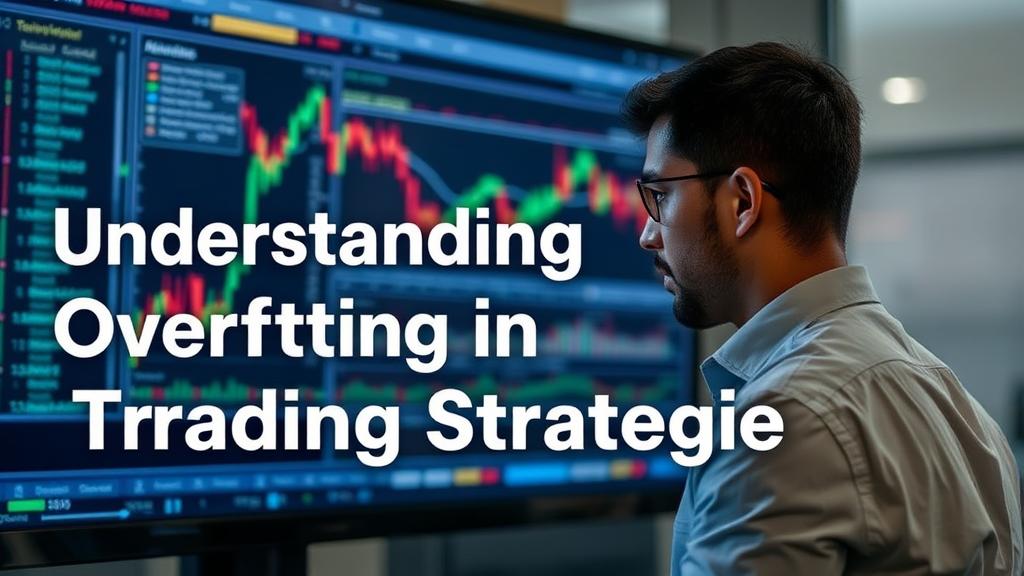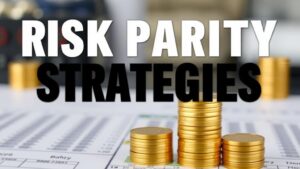Spotlighting the Power of Data
Data-driven insights are transforming the way we approach investing. Here’s how algorithms are reshaping the rules.
Understanding Overfitting in Trading Strategies
In the world of trading, the quest for profits often leads to the development of complex algorithms and strategies. While these approaches can yield significant returns, they also carry the risk of overfitting. Overfitting occurs when a model learns the noise in historical data rather than the underlying patterns, leading to poor performance in real-world applications. In this article, we will explore the concept of overfitting in trading strategies, its causes, implications, and how traders can avoid this pitfall.
Overfitting is a common phenomenon in statistical modeling and machine learning, where a model becomes too complex and starts to capture noise instead of the actual signal. This often results in a model that performs exceptionally well on training data but poorly on unseen data.
Key Characteristics of Overfitting
- **High Training Accuracy, Low Testing Accuracy**: A model that is overfitted will show very high accuracy when evaluated on the training dataset but will struggle to maintain that performance on new or unseen data.
- **Complexity**: Overfitted models often have too many parameters, making them overly complex. This complexity allows them to fit the training data too closely, including its noise.
3. **Poor Generalization**: The ultimate goal of any trading strategy is to generalize well to new data. Overfitted models fail to do this, resulting in decisions that are not robust in changing market conditions.
Causes of Overfitting in Trading Strategies
Understanding the causes of overfitting is essential for traders looking to develop robust strategies. Some common causes include:
1. **Excessive Complexity**
Traders often deploy intricate models with numerous variables and parameters. For instance, a trading strategy that incorporates multiple technical indicators, market sentiment, and macroeconomic factors may end up being overly complex. Each additional layer of complexity increases the risk of overfitting.
2. **Insufficient Data**
Using a limited dataset to train a model can lead to overfitting. If a strategy is developed on a small sample of market data, it may not capture the full range of market behaviors. Consequently, the model learns peculiarities of that limited dataset rather than general market trends.
3. **Noise in Data**
Financial markets are inherently noisy. If a model is trained on data that includes significant noise—such as random price movements—it may incorrectly identify patterns that do not exist in reality. This can lead to strategies that perform well in backtesting but fail in live trading.
Implications of Overfitting in Trading
Overfitting can have significant consequences for traders, impacting both short-term performance and long-term viability. Here are some implications to consider:
1. **Financial Losses**
The most immediate impact of overfitting is financial loss. A strategy that performs well in backtests may lead traders to make decisions based on faulty assumptions, ultimately resulting in capital erosion.
2. **Increased Risk**
Overfitted models often exhibit a false sense of security. Traders may become overly confident in their strategies, leading to increased risk-taking. This can manifest in larger position sizes or failure to implement proper risk management techniques.
3. **Loss of Credibility**
For professional traders and firms, overfitting can damage reputations. Strategies that fail in real-world scenarios can lead clients to lose trust, affecting future business opportunities.
How to Avoid Overfitting in Trading Strategies
Avoiding overfitting requires a combination of best practices in model development, validation, and execution. Here are several strategies traders can implement:
1. **Simplify Models**
- Start with simpler models that capture the essential market dynamics without unnecessary complexity.
- Use fewer indicators and focus on those with proven predictive power.
2. **Use Cross-Validation**
- Employ cross-validation techniques such as k-fold validation to ensure that the model performs well on different subsets of data.
- This helps to assess the robustness of the model and reduces the likelihood of overfitting.
3. **Implement Regularization Techniques**
- Regularization techniques, like Lasso (L1) or Ridge (L2) regression, can help prevent overfitting by adding a penalty for complexity.
- These methods encourage simpler models, thereby improving generalization.
4. **Test on Out-of-Sample Data**
- Always reserve a portion of your data for out-of-sample testing. This allows you to evaluate how well your strategy performs on data it has never seen before.
- Make sure to test on different market conditions to assess the strategy’s robustness.
5. **Stay Updated**
- Financial markets are dynamic, with ever-changing conditions. Regularly revisit and adjust your models based on new data and market trends.
- Monitor performance metrics and adapt strategies to ensure they remain relevant.
Conclusion
Overfitting is a critical concept for traders to understand when developing and implementing trading strategies. It represents a significant risk that can lead to financial losses, increased risk exposure, and damage to credibility. By recognizing the signs of overfitting and implementing strategies to mitigate its effects, traders can enhance their decision-making processes and improve their chances of long-term success in the complex world of financial markets.
In a landscape where data-driven strategies are becoming increasingly popular, maintaining a balance between model complexity and generalization is key. By following best practices in model development and validation, traders can navigate the challenges of overfitting and create strategies that stand the test of time.



